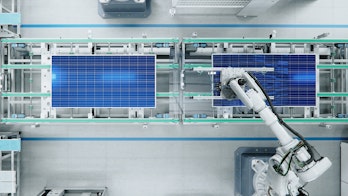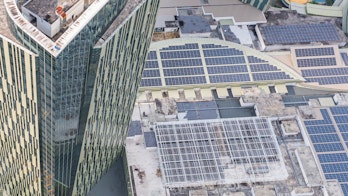Reports
-
- Clean Energy Transitions Programme (182)
- Technology Collaboration Programme (86)
- Clean Energy Transitions in Emerging Economies (57)
- EU4Energy (31)
- Digital Demand-Driven Electricity Networks Initiative (16)
- Energy Sub-Saharan Africa (11)
- Electric Vehicles Initiative (8)
- Energy Efficiency in Emerging Economies (8)
- People-Centred Clean Energy Transitions (8)
- CEM Hydrogen Initiative (7)
-

Energy Technology Perspectives 2024
Flagship report — October 2024
-
Developing a Global Energy Efficiency Workforce in the Buildings Sector
Default report — October 2024

-
The Role of E-fuels in Decarbonising Transport
Fuel report — December 2023

-
CCUS Policies and Business Models: Building a Commercial Market
An IEA CCUS Handbook
Technology report — November 2023

-
The State of Clean Technology Manufacturing – November 2023 Update
An Energy Technology Perspectives Special Briefing
Default report — November 2023

-
Technology Roadmaps
What steps do governments and industry need to take to ensure the development and deployment of low-carbon technologies?
Technology report — October 2023
-
Efficient Grid-Interactive Buildings
Future of buildings in ASEAN
Default report — October 2023

-

Net Zero Roadmap: A Global Pathway to Keep the 1.5 °C Goal in Reach
2023 Update
Flagship report — September 2023
-

Tracking Clean Energy Progress 2023
Assessing critical energy technologies for global clean energy transitions
Flagship report — July 2023
-
Using Digitalisation in Emerging Markets and Developing Economies to Enable Demand Response in Buildings
Default report — July 2023

-
Tracking SDG7: The Energy Progress Report, 2023
Statistics report — June 2023
-
Unlocking Smart Grid Opportunities in Emerging Markets and Developing Economies
Default report — June 2023

-

World Energy Investment 2023
Flagship report — May 2023
-

Energy Technology Perspectives 2023
Flagship report — January 2023
-
Tracking Public Investment in Energy Technology Research: A Roadmap
Technology report — September 2022

-
Technology and Innovation Pathways for Zero-carbon-ready Buildings by 2030
A strategic vision from the IEA Technology Collaboration Programmes
Technology report — September 2022
-
By 2030 EVs represent more than 60% of vehicles sold globally, and require an adequate surge in chargers installed in buildings
Part of Technology and innovation pathways for zero-carbon-ready buildings by 2030
Technology report — September 2022
-
Residential behaviour changes lead to a reduction in heating and cooling energy use by 2030
Part of Technology and innovation pathways for zero-carbon-ready buildings by 2030
Technology report — September 2022
-
Targeting 100% LED lighting sales by 2025
Part of Technology and innovation pathways for zero-carbon-ready buildings by 2030
Technology report — September 2022
-
Solar thermal technologies deployed in around 400 million dwellings by 2030
Part of Technology and innovation pathways for zero-carbon-ready buildings by 2030
Technology report — September 2022
-
350 million building units connected to district energy networks by 2030, provide about 20% of space heating needs
Part of Technology and innovation pathways for zero-carbon-ready buildings by 2030
Technology report — September 2022
-
Solar PV and wind supply about 40% of building electricity use by 2030
Part of Technology and innovation pathways for zero-carbon-ready buildings by 2030
Technology report — September 2022
-
Approximately 100 million households rely on rooftop solar PV by 2030
Part of Technology and innovation pathways for zero-carbon-ready buildings by 2030
Technology report — September 2022
-
Installation of about 600 million heat pumps covering 20% of buildings heating needs required by 2030
Part of Technology and innovation pathways for zero-carbon-ready buildings by 2030
Technology report — September 2022